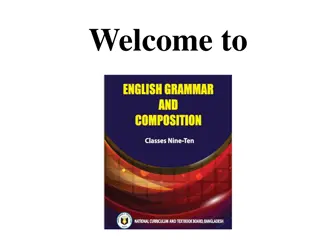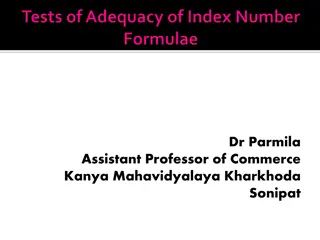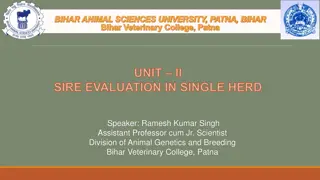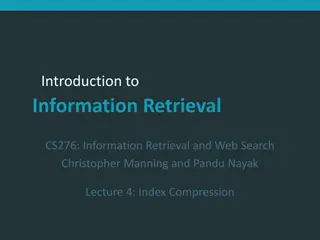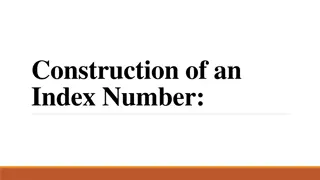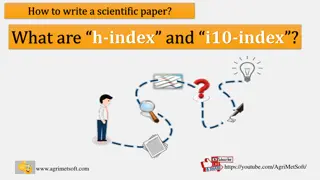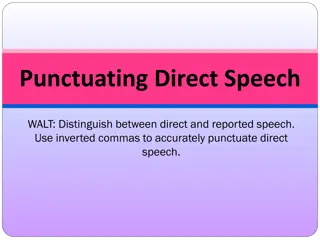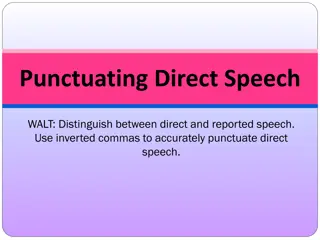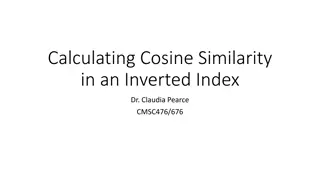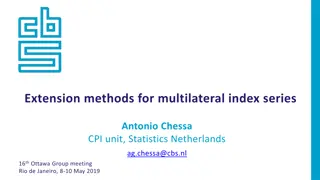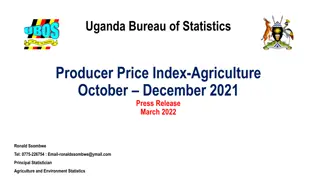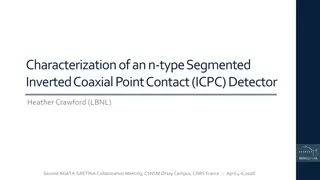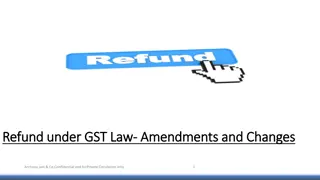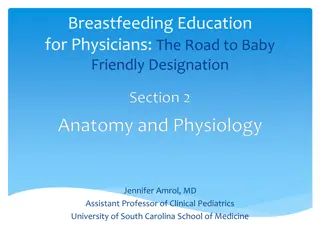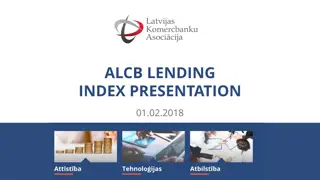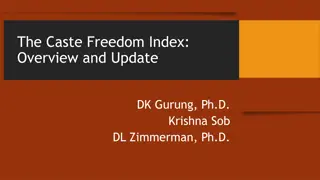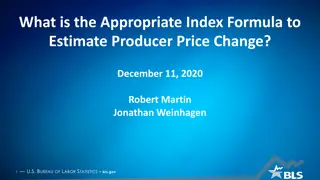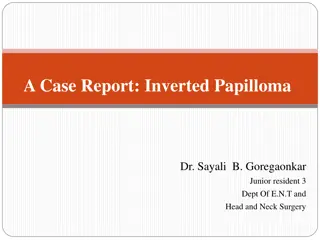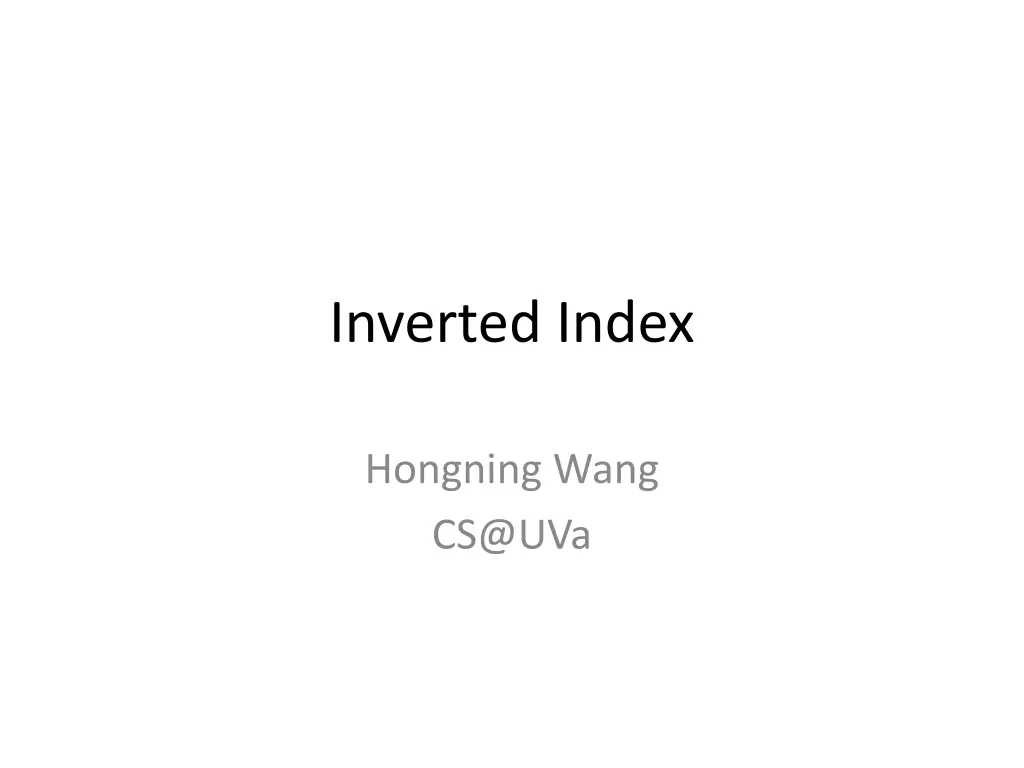
Information Retrieval Techniques and Search Engine Architecture Overview
Explore the fundamentals of information retrieval and search engine architecture with a focus on inverted index, ranking procedure, Zipf's Law, and text indexing. Understand the complexities of space and time analyses in information retrieval systems. Dive into strategies such as crawling, tokenization, and query processing for efficient retrieval of relevant information.
Uploaded on | 2 Views
Download Presentation

Please find below an Image/Link to download the presentation.
The content on the website is provided AS IS for your information and personal use only. It may not be sold, licensed, or shared on other websites without obtaining consent from the author. If you encounter any issues during the download, it is possible that the publisher has removed the file from their server.
You are allowed to download the files provided on this website for personal or commercial use, subject to the condition that they are used lawfully. All files are the property of their respective owners.
The content on the website is provided AS IS for your information and personal use only. It may not be sold, licensed, or shared on other websites without obtaining consent from the author.
E N D
Presentation Transcript
Inverted Index Hongning Wang CS@UVa
Abstraction of search engine architecture Indexed corpus Crawler Ranking procedure Evaluation Feedback Doc Analyzer (Query) User Query Rep Doc Representation results Ranker Indexer Index CS@UVa CS4501: Information Retrieval 2
Recap: Zipfs Law Word frequency Word rank by frequency A plot of word frequency in Wikipedia (Nov 27, 2006) CS@UVa CS4501: Information Retrieval 3
Recap: automatic text indexing Remove non-informative words Remove 1s Remove 0s Remove rare words CS@UVa CS4501: Information Retrieval 4
Recap: abstraction of search engine architecture Indexed corpus 1. Visiting strategy 2. Avoid duplicated visit 3. Re-visit policy Crawler 1. HTML parsing 2. Tokenization 3. Stemming/normalization 4. Stopword/controlled vocabulary filter Doc Analyzer Doc Representation BagOfWord representation! CS@UVa CS4501: Information Retrieval 5
What we have now Documents have been Crawled from Web Tokenized/normalized Represented as Bag-of-Words Let s do search! Query: information retrieval information retrieval retrieved is helpful for you everyone Doc1 1 1 0 1 1 1 0 1 Doc2 1 0 1 1 1 1 1 0 CS@UVa CS4501: Information Retrieval 6
Complexity analysis Space complexity analysis ?(? ?) D is total number of documents and V is vocabulary size Zipf s law: each document only has about 10% of vocabulary observed in it 90% of space is wasted! Space efficiency can be greatly improved by only storing the occurred words Solution: linked list for each document CS@UVa CS4501: Information Retrieval 7
Complexity analysis Time complexity analysis ?( ? ? |?|) ? is the length of query, |?| is the length of a document doclist = [] for (wi in q) { for (d in D) { for (wj in d) { break; } } } return doclist; Bottleneck, since most of them won t match! if (wi == wj) { doclist += [d]; } CS@UVa CS4501: Information Retrieval 8
Solution: inverted index Build a look-up table for each word in vocabulary From word to documents! Postings Dictionary Time complexity: ?( ? |?|), |?| is the average length of posting list By Zipf s law, ? ? Doc1 Doc2 information Doc1 retrieval Doc2 retrieved Query: information retrieval is Doc1 Doc2 helpful Doc1 Doc2 for Doc1 Doc2 Doc2 you everyone Doc1 CS@UVa CS4501: Information Retrieval 9
Structures for inverted index Dictionary: modest size Needs fast random access Stay in memory Hash table, B-tree, trie, Postings: huge Stay on disk Sequential access is expected Contain docID, term freq, term position, Compression is needed Key data structure underlying modern IR - Christopher D. Manning CS@UVa CS4501: Information Retrieval 10
Sorting-based inverted index construction <Tuple>: <termID, docID, count> Sort by docId Sort by termId All info about term 1 doc1 <1,1,3> <2,1,2> <3,1,1> ... <1,2,2> <3,2,3> <4,2,5> <1,1,3> <1,2,2> <2,1,2> <2,4,3> ... <1,5,3> <1,6,2> <1,1,3> <1,2,2> <1,5,2> <1,6,3> ... <1,300,3> <2,1,2> Term Lexicon: 1 the 2 cold 3 days 4 a ... doc2 ... DocID Lexicon: 1 doc1 2 doc2 3 doc3 ... doc300 <1,300,3> <3,300,1> ... <1,299,3> <1,300,1> ... <5000,299,1> <5000,300,1> ... Local sort CS4501: Information Retrieval Merge sort Parse & Count CS@UVa 11
Sorting-based inverted index Challenges Document size exceeds memory limit Key steps Local sort: sort by termID For later global merge sort Global merge sort Preserve docID order: for later posting list join Can index large corpus with a single machine! Also suitable for MapReduce! CS@UVa CS4501: Information Retrieval 12
A close look at inverted index Approximate search: e.g., misspelled queries, wildcard queries Proximity search: e.g., phrase queries Postings Dictionary Doc1 Doc2 information Doc1 Dynamic index update retrieval Doc2 retrieved is Doc1 Doc2 helpful Doc1 Doc2 for Doc1 Doc2 Doc2 Index compression you everyone Doc1 CS@UVa CS4501: Information Retrieval 13
Dynamic index update Periodically rebuild the index Acceptable if change is small over time and penalty of missing new documents is negligible Auxiliary index Keep index for new documents in memory Merge to index when size exceeds threshold Increase I/O operation Solution: multiple auxiliary indices on disk, logarithmically merging CS@UVa CS4501: Information Retrieval 14
Index compression Benefits Save storage space Increase cache efficiency Improve disk-memory transfer rate Target Postings file CS@UVa CS4501: Information Retrieval 15
Basics in coding theory Expected code length ? ? = ? ? ?? ?? Event Event Event P(X) P(X) P(X) Code Code Code a a a 0.25 0.75 0.75 00 00 0 b b b 0.25 0.10 0.10 01 01 10 c c c 0.25 0.10 0.10 10 10 111 d d d 0.25 0.05 0.05 11 11 110 ? ? = ? ? ? = ? ? ? = ?.? CS@UVa CS4501: Information Retrieval 16
Index compression Observation of posting files Instead of storing docID in posting, we store gap between docIDs, since they are ordered Zipf s law again: The more frequent a word is, the smaller the gaps are The less frequent a word is, the shorter the posting list is Heavily biased distribution gives us great opportunity of compression! Information theory: entropy measures compression difficulty. CS@UVa CS4501: Information Retrieval 17
Index compression Solution Fewer bits to encode small (high frequency) integers Variable-length coding Unary: x 1 is coded as x-1 bits of 1 followed by 0, e.g., 3=> 110; 5=>11110 -code: x=> unary code for 1+ log x followed by uniform code for x-2 log x in log x bits, e.g., 3=>101, 5=>11001 -code: same as -code ,but replace the unary prefix with -code. E.g., 3=>1001, 5=>10101 CS@UVa CS4501: Information Retrieval 18
Recap: inverted index Build a look-up table for each word in vocabulary From word to documents! Postings Dictionary Time complexity: ?( ? |?|), |?| is the average length of posting list By Zipf s law, ? ? Doc1 Doc2 information Doc1 retrieval Doc2 retrieved Query: information retrieval is Doc1 Doc2 helpful Doc1 Doc2 for Doc1 Doc2 Doc2 you everyone Doc1 CS@UVa CS4501: Information Retrieval 19
Recap: sorting-based inverted index construction <Tuple>: <termID, docID, count> Sort by docId Sort by termId All info about term 1 doc1 <1,1,3> <2,1,2> <3,1,1> ... <1,2,2> <3,2,3> <4,2,5> <1,1,3> <1,2,2> <2,1,2> <2,4,3> ... <1,5,3> <1,6,2> <1,1,3> <1,2,2> <1,5,2> <1,6,3> ... <1,300,3> <2,1,2> Term Lexicon: 1 the 2 cold 3 days 4 a ... doc2 ... DocID Lexicon: 1 doc1 2 doc2 3 doc3 ... doc300 <1,300,3> <3,300,1> ... <1,299,3> <1,300,1> ... <5000,299,1> <5000,300,1> ... Local sort CS4501: Information Retrieval Merge sort Parse & Count CS@UVa 20
Recap: index compression Observation of posting files Instead of storing docID in posting, we store gap between docIDs, since they are ordered Zipf s law again: The more frequent a word is, the smaller the gaps are The less frequent a word is, the shorter the posting list is Heavily biased distribution gives us great opportunity of compression! Information theory: entropy measures compression difficulty. CS@UVa CS4501: Information Retrieval 21
Index compression Example Table 1: Index and dictionary compression for Reuters-RCV1. (Manning et al. Introduction to Information Retrieval) Data structure Size (MB) Text collection 960.0 dictionary 11.2 Postings, uncompressed Postings -coded 400.0 101.0 Compression rate: (101+11.2)/960 = 11.7% CS@UVa CS4501: Information Retrieval 22
Search within in inverted index Query processing Parse query syntax E.g., Barack AND Obama, orange OR apple Perform the same processing procedures as on documents to the input query Tokenization->normalization->stemming->stopwords removal CS@UVa CS4501: Information Retrieval 23
Search within inverted index Procedures Lookup query term in the dictionary Retrieve the posting lists Operation AND: intersect the posting lists OR: union the posting list NOT: diff the posting list CS@UVa CS4501: Information Retrieval 24
Search within inverted index Example: AND operation scan the postings 2 1 4 2 8 3 16 5 32 8 64 128 Term1 13 21 34 Term2 Time complexity: ?( ?1+ |?2|) Trick for speed-up: when performing multi-way join, starts from lowest frequency term to highest frequency ones CS@UVa CS4501: Information Retrieval 25
Phrase query computer science He uses his computer to study science problems is not a match! We need the phase to be exactly matched in documents N-grams generally does not work for this Large dictionary size, how to break long phrase into N- grams? We need term positions in documents We can store them in the inverted index CS@UVa CS4501: Information Retrieval 26
Phrase query Generalized postings matching Equality condition check with requirement of position pattern between two query terms e.g., T2.pos-T1.pos = 1 (T1 must be immediately before T2 in any matched document) Proximity query: |T2.pos-T1.pos| k scan the postings 2 1 4 2 8 3 16 5 32 8 64 128 Term1 13 21 34 Term2 CS@UVa CS4501: Information Retrieval 27
More and more things are put into index Document structure Title, abstract, body, bullets, anchor Entity annotation Being part of a person s name, location s name CS@UVa CS4501: Information Retrieval 28
Spelling correction Tolerate the misspelled queries barck obama -> barack obama Principles Of various alternative correct spellings of a misspelled query, choose the nearest one Of various alternative correct spellings of a misspelled query, choose the most commonone CS@UVa CS4501: Information Retrieval 29
Spelling correction Proximity between query terms Edit distance Minimum number of edit operations required to transform one string to another Insert, delete, replace Tricks for speed-up Fix prefix length (error does not happen on the first letter) Build character-level inverted index, e.g., for length 3 characters Consider the layout of a keyboard E.g., u is more likely to be typed as y instead of z CS@UVa CS4501: Information Retrieval 30
Spelling correction Proximity between query terms Query context flew form IAD -> flew from IAD Solution Enumerate alternatives for all the query terms Heuristics must be applied to reduce the search space CS@UVa CS4501: Information Retrieval 31
Spelling correction Proximity between query terms Phonetic similarity herman -> Hermann Solution Phonetic hashing similar-sounding terms hash to the same value CS@UVa CS4501: Information Retrieval 32
What you should know Inverted index for modern information retrieval Sorting-based index construction Index compression Search in inverted index Phrase query Query spelling correction CS@UVa CS4501: Information Retrieval 33
Todays reading Introduction to Information Retrieval Chapter 2: The term vocabulary and postings lists Section 2.3, Faster postings list intersection via skip pointers Section 2.4, Positional postings and phrase queries Chapter 4: Index construction Chapter 5: Index compression Section 5.2, Dictionary compression Section 5.3, Postings file compression CS@UVa CS4501: Information Retrieval 34


